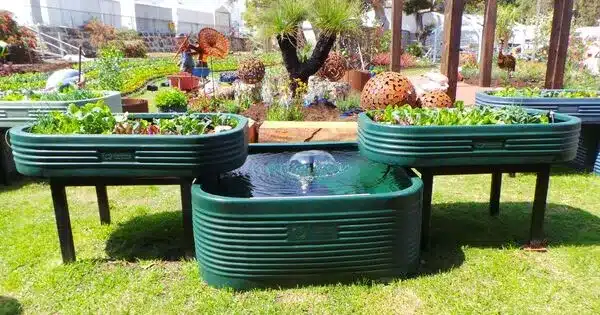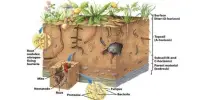Aquaponics is a food production system that combines aquaculture (raising aquatic creatures such as fish, crayfish, snails, or prawns in tanks) and hydroponics (growing plants in water) by feeding nutrient-rich aquaculture water to hydroponically produced plants. It is a symbiotic agricultural technique that combines aquaculture (raising aquatic animals such as fish) and hydroponics (growing plants in water). This integrated system makes it possible to produce fish as well as vegetables or other products in an efficient and environmentally friendly manner.
Because all aquaponic systems are based on current hydroponic and aquaculture farming techniques, the size, complexity, and types of foods grown in an aquaponic system can vary as much as any system found in any distinct agricultural discipline.
Here’s how it generally works:
- Fish Tank (Aquaculture): This system begins with a fish tank in which fish or other aquatic organisms are raised. Tilapia, trout, and catfish are common aquaponic fish species. These fish excrete ammonia-based feces.
- Biological Filter: If left to collect, fish feces are high in ammonia, which can be hazardous to the fish. To solve this, the fish tank’s water is pumped through a biological filter containing beneficial microorganisms. These bacteria turn ammonia into nitrites, which are then converted into nitrates, a less toxic type of nitrogen that plants can use.
- Plant Cultivation: The biological filter’s nitrate-rich water is subsequently delivered to hydroponic grow beds, where plants are cultivated. This water contains vital nutrients for plant growth. Aquaponics systems commonly grow lettuce, herbs, tomatoes, and various leafy greens. The plants serve as a natural filter, purifying the water before returning it to the fish tank.
- Water Circulation: A closed-loop system is created by circulating water from the fish tank to the biological filter and then to the hydroponic grow beds via a pump and plumbing system. This continuous water circulation maximizes resource use while minimizing waste.
Advantages include:
- Resource Efficiency: It uses less water compared to traditional soil-based agriculture and requires no soil.
- Reduced Environmental Impact: It minimizes the need for synthetic fertilizers and reduces the risk of soilborne diseases.
- Year-round Production: This system can operate year-round in controlled environments, allowing for consistent crop and fish production.
- Space Efficiency: This system can be set up in relatively small spaces, making them suitable for urban farming.
- Sustainable: It promotes sustainability by reducing waste, conserving water, and minimizing the use of pesticides and herbicides.
However, aquaponics also requires careful monitoring and management of water quality, temperature, and nutrient levels to ensure the health of both fish and plants. Additionally, setting up an aquaponics system can be initially expensive due to the equipment and infrastructure needed, but it can offer long-term benefits in terms of sustainable food production.
















